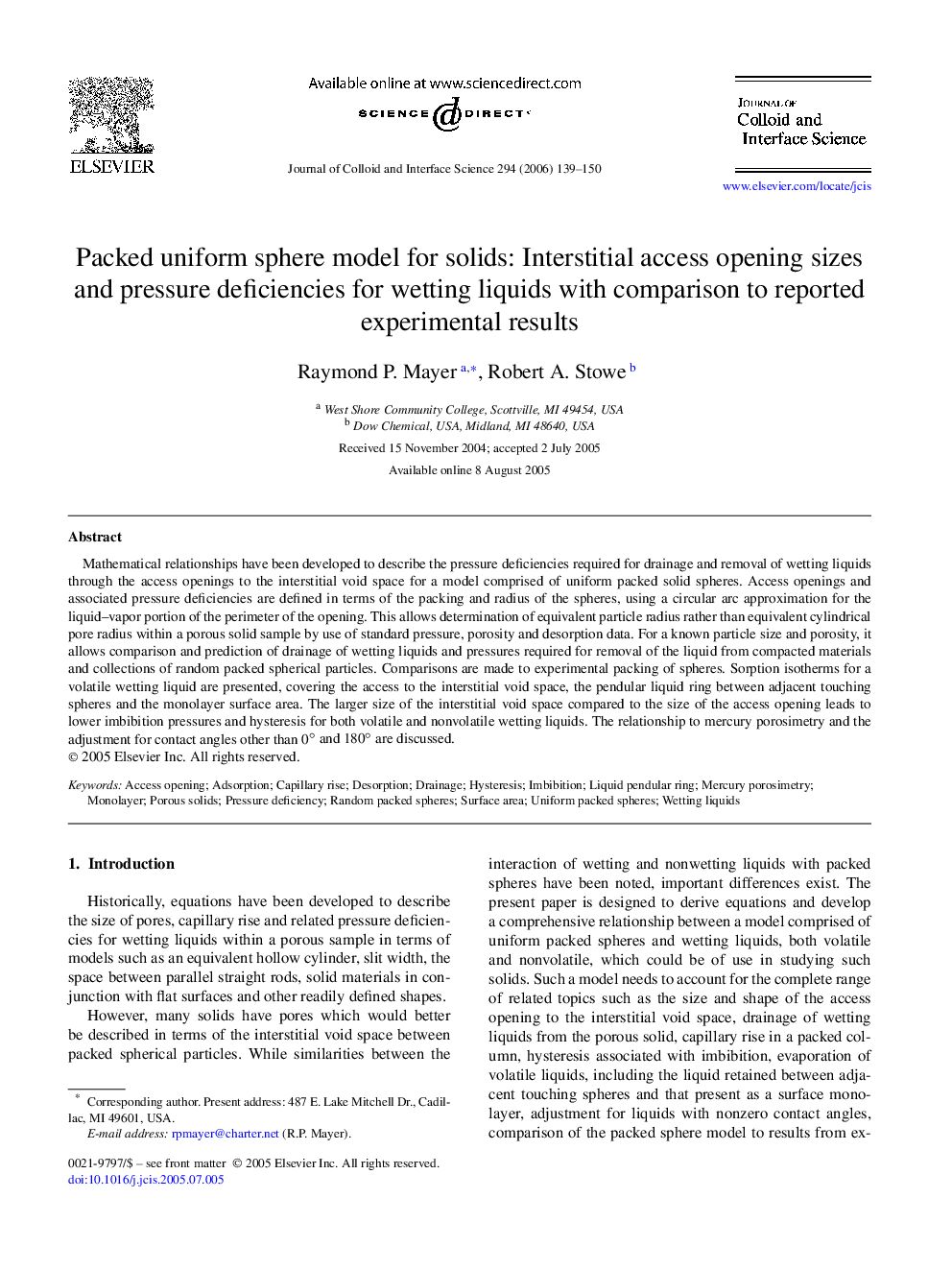| Article ID | Journal | Published Year | Pages | File Type |
|---|---|---|---|---|
| 613906 | Journal of Colloid and Interface Science | 2006 | 12 Pages |
Mathematical relationships have been developed to describe the pressure deficiencies required for drainage and removal of wetting liquids through the access openings to the interstitial void space for a model comprised of uniform packed solid spheres. Access openings and associated pressure deficiencies are defined in terms of the packing and radius of the spheres, using a circular arc approximation for the liquid–vapor portion of the perimeter of the opening. This allows determination of equivalent particle radius rather than equivalent cylindrical pore radius within a porous solid sample by use of standard pressure, porosity and desorption data. For a known particle size and porosity, it allows comparison and prediction of drainage of wetting liquids and pressures required for removal of the liquid from compacted materials and collections of random packed spherical particles. Comparisons are made to experimental packing of spheres. Sorption isotherms for a volatile wetting liquid are presented, covering the access to the interstitial void space, the pendular liquid ring between adjacent touching spheres and the monolayer surface area. The larger size of the interstitial void space compared to the size of the access opening leads to lower imbibition pressures and hysteresis for both volatile and nonvolatile wetting liquids. The relationship to mercury porosimetry and the adjustment for contact angles other than 0° and 180° are discussed.
Graphical abstractAccess opening shapes and associated pressure deficiencies required for drainage and removal of wetting liquids are defined in terms of the packing and radius of the spheres.Figure optionsDownload full-size imageDownload as PowerPoint slide
